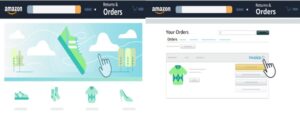How the Marginal scheme works
VAT margin schemes involve paying a reduced VAT rate on second hand items. It’s only paying VAT on the difference between the buying and the selling price.
The margin scheme permits a company to pay 16.67% VAT rather than the standard 20% for eligible purchases. The 16.67% rate is only applied to the difference between. What you paid for the product, and the amount you sold it for.
Example
You run a second hand computer business. The business is registered for VAT.
You buy a computer for £1,200 from an individual (not VAT registered). Then sell it for £1,500 to another individual (also not VAT registered).
Using the margin scheme, you will pay VAT on the difference between you bought and sold the watch at, £300.
Therefore, you will pay VAT of £50.00.
If you were using the Standard VAT Scheme. You would have had to either increase your selling or take VAT of £333.33 out of your selling price.
How can I register for a VAT Margin Scheme?
The Marginal VAT Scheme has been designed for VAT registered “businesses”. If you wish to apply for this scheme. You should VAT registered individual who deals with the business of buying and selling second hand computer or other devices and goods.
Although, if you purchase a second-hand computer from a non-VAT registered individual and/or sell. It would another non-registered individual. You can still apply for the Margin Scheme. Since you, yourself, are a registered business. There is no formal registration process. You can start using a margin scheme. At any time by retaining the correct records and then reporting this on your VAT return.
Some of the items you buy and sell is not eligible for a margin scheme. You pay and charge VAT for those items in the normal way.
If you would like to register your business for VAT. You can start an application here.
Eligible products and conditions under the VAT margin scheme
The business can choose to use the margin scheme when you sell:
- second-hand goods
- works of art.
- antiques
- collectors’ items
You will not able to use the margin scheme for:
- any item you bought for which you were charged VAT.
- precious metals
- investment gold
- precious stones
Exceptions
There are specific rules if you are engaged in the sale of:
- second hand vehicles
- horses and ponies
- houseboats and caravans
- high volume, low price items – you can use the Global Accounting Scheme, a simplified version of the margin scheme.
There are also different rules:
- for auctioneers
- for agents
- if you buy and sell goods in Northern Ireland and the EU
Check if you can use a VAT margin scheme if you import from, or export to, countries outside the UK.
VAT margin scheme for cars
It is possible to use the VAT margin scheme for second-hand cars. However, there are different requirements for these sales than the ones listed above.
The same overall principle applies to cars. Where you will calculate the margin. Then pay 16.67% (one-sixth) VAT on the margin amount. However, there are very strict rules surrounding the car sale:
- Car must second-hand – must have been driven on the road. It is suitable for use.
- Imported vehicles from outside the EU do not qualify.
- Purchase of the vehicle must have been from a non VAT registered individual/entity. Otherwise VAT registered business, who cannot reclaim VAT on the sale due to using the margin scheme
- The purchase and sale invoice cannot show the VAT separately.
If sales does not meet these conditions. Then you will need to account for the standard VAT.
The Main Conditions of the Second Hand Margin Scheme
You decide to use the scheme. Then there are a number of conditions you need to meet. If you don’t meet them all. You cannot use the scheme:
- the goods must be eligible (second-hand goods, antiques or works of art);
- you have acquired the goods in eligible circumstances. In most cases. That means you obtained the goods for resale in circumstances. Where you could not claim any VAT back (the most likely scenario is you bought your item from an individual);
- Calculate the VAT margin in accordance with the rules of the scheme.
- you must meet the record-keeping rules of the scheme, including those regarding sales invoices, purchase invoices and stock books.
All of your sales meet these conditions for both your item purchase and onward sale. Then all your sales will meet the criteria of the VAT Second Hand Margin Scheme so you can apply the scheme.
How to Fill Out Your Margin Scheme VAT Return
When you come to fill out your VAT return. You will need to gather together the items, you have sold from your Stock Book for the quarter, you are reporting on. Then you’ll need to total up the following figures ready for the VAT return boxes as follows:
Box 1 The output tax due on all eligible goods sold in the period covered by the return.
Box 6 Include the full selling price of all eligible goods sold in the period, less any VAT due on the margin.
Box 7 The full purchase price of eligible goods bought in the period.
You should note:
- There is no need to include any figures in boxes 7 & 8;
- Do not include any items you made a loss on;
- You cannot set a loss on one item off against an item you made a profit on.
If you have made sales and purchases is the normal way, then you will need to add these figures to your Margin Scheme VAT Figures and include the total amounts in your VAT return.
Can Buyers Claim Back VAT on Second-Hand Goods?
- No buyers cannot claim back VAT on second-hand goods bought under the margin scheme.
- Under the scheme, you do not issue VAT invoices. Instead, sales invoices do not have a separate line for VAT, just to total sales prices is shown.
Who Should Use the Margin Scheme?
The scheme is ideally suited to anyone who sells second-hand goods to members of the public or non-VAT registered business such as sellers on:
- eBay
- Etsy
- Amazon
- Mobile phone re-sellers
- Vintage clothes sellers
Though we’ve covered a lot regarding Marginal VAT, We still strongly recommend you talk with your accountant beforehand. If you have any questions, feel free to reach out to us at [email protected].



